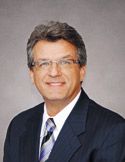Fabricating implant-supported dentures
Commonly encountered challenges faced by laboratories when fabricating implant-supported dentures are lack of case planning and arbitrary implant placement that often create nearly impossible fabrication scenarios. For these reasons, technicians should be included as an integral part of the implant restorative team to provide critical information regarding tentative case design and subsequent implant placement decisions.
Commonly encountered challenges faced by laboratories when fabricating implant-supported dentures are lack of case planning and arbitrary implant placement that often create nearly impossible fabrication scenarios. For these reasons, technicians should be included as an integral part of the implant restorative team to provide critical information regarding tentative case design and subsequent implant placement decisions. This communication should provide precise locations of implants and any required boney/soft tissue modification necessary to facilitate restorative procedures.
Such information can be used by the surgical team for cone beam imaging through fabrication of scan appliances based on the restorative treatment plan. If imaging results contraindicate desired locations for precise placement of implants, then the surgical team can request compromise/alternate implant locations. Arbitrarily substituting locations without prior consultation contributes to fabrication challenges.
Injection system
Ivoclar Vivadent’s SR Ivocap® Injection system is an innovative controlled heat and pressure polymerization-based system that eliminates inaccuracies in fit caused by chemical shrinkage of polymethyl methacrylate. Demonstrating a high degree of polymerization and a strong bond to resin teeth, the system compensates for acrylic shrinkage by continuously flowing the exact amount of material needed into the flask through pressure injection, enabling fabrication of high-quality dentures that fit well and are comfortable. The material is distributed in pre-dosed capsule form, so no mixing or dosing is required.
The SR Ivocap polymerization system also reduces the risk of system-induced increases in vertical dimension and spherical deformation, which eliminates the need for time consuming occlusal adjustments. The risk of fracture also is greatly reduced because the system promotes homogeneity, yet the denture base material remains highly polishable, maintainable and resistant to plaque accumulation.
Case Presentation
Upon presentation, this case failed to meet the minimum requirements for the restorative space required for typical denture fabrication. The intent of the restorative dentist was to use “Locator” attachments (Zest Anchors). The ubiquitous Locator attachment is contraindicated in this case because of insufficient restorative space in which to place its retentive components. In addition, the patient had exceptional esthetic expectations exacerbated by her highly mobile lip and high smile line. Because the dentist and technicians were attempting to optimize an already compromised case, it was imperative that a logical, methodical and innovative mindset be maintained.
Because the surgical team placed the implants prior to any treatment planning, they were uncovered after final impressions were taken, which required determination of implant head location relative to the crestal emergence. The dentist used a silicone material in the anticipated areas, with indentations representing the final attachment placement.
Laboratory Protocol
01 Rhein 83 Equator attachments were selected because of their low vertical profile, which is the lowest available. To relay this information to the master casts, cotton candy flavor lip gloss was used as reverse indicating paste (Figs. A and B). These indicators marked the casts, and the highlighted areas were subsequently identified with a red marker.
02 The Rhein 83 Equator metal keepers were then fixed to the models (Fig. C), and once satisfied with the estimated locations, they were surrounded with 1 mm thick partial saddle wax to anticipate deviations in positioning assessment (Fig. D).
03 The wax try-in was returned from a successful clinical evaluation and patient approval, and a series of Sil-tech indices (Ivoclar Vivadent) were developed to maintain the exact position of vertical dimension of occlusion and tooth alignment, because these would be used to reset the teeth to the master casts with the Rhein 83 Equator attachments in place (Fig. E). This procedure was critical to the final prosthesis because transferring this information cannot be predictably duplicated without this method.
04 The BlueLine® (Ivoclar Vivadent) denture teeth were selected, because of their anatomical similarity to natural dentition and multilayered acrylic, true shade processing technique (Fig. F).
05 The indices were placed without the denture teeth, and the limited space available for the final prosthesis was recognized (Fig. G).
06 A cast mesh retention element also needed to be incorporated to the appliances to ensure stability and strength. In situations where space is at a premium, the mesh must be modified to be as strong as possible without interfering with final function and esthetics.
07 The red marker areas were cut back to allow space for the denture teeth, without reducing too much of the cervical areas (Figs. H and I).
08 The teeth were reset to the master casts over the Rhein 83 Equator attachments and the cast mesh frames, then returned to the Stratos mountings for final evaluation.
09 The vertical pin setting was checked for accuracy, and the wax-ups were sealed to the casts (Fig. J). The Stratos Articulator was used for its range of use in both removable and fixed situations.
10 Processing was accomplished with the Ivocap technique, which minimizes any acrylic processing distortions and provides the most dense and accurate acrylic available. This technique is a continuous injection process that ensures a ready supply of material, because polymerization shrinkage is initiated in the curing process, thus resulting in a predictable outcome that translates into less finishing and polishing effort.
11 The overdentures were devested, revealing waxed contours faithfully replicated (Fig. K).
12 The dentures were remounted to the Stratos Articulator, and the vertical pin was verified for VDO stability (Fig. L).
13 The occlusion was equilibrated for exquisite stability and function, and the Feeding Sprues removed.
14 The dentures were subsequently removed from the casts and finished and polished for delivery.
15 Spaces were provided in the intaglio surface for the Rhein 83 Equators to be picked up chairside (Fig. M).
Conclusion
This case reveals a common challenge encountered by laboratories. Lack of case planning and arbitrary implant placement often create nearly impossible fabrication scenarios. This case failed to meet the minimum requirements for the restorative space needed for typical case fabrication.
Technicians are an integral part of the implant restorative team who can provide critical information regarding tentative case design and subsequent implant placement decisions. The restorative team, comprised of the restorative doctor and his laboratory technician, are responsible for defining final treatment goals. The results of proper case planning and work-up are then communicated to the surgical team and must include precise implant locations and any required boney/soft tissue modification necessary to facilitate restorative procedures.
This information can be used by the surgical team for cone beam imaging through fabrication of scan appliances based on the restorative treatment plan. If imaging results contraindicate desired locations for precise implant placement, then it is up to the surgical team to request compromise/alternate implant locations. Under no circumstance should the surgical team arbitrarily substitute locations without prior approval by the restorative team. It’s often helpful for a member of the restorative team to attend the implant surgery.
Laboratories are incredibly innovative. They often can engineer solutions to very challenging situations. Unfortunately these solutions can result in less than desirable physical properties of the final restoration. Resultant restorations may require repeated service and possibly exhibit longevity issues. Compromises often lead to disappointments, which is why planning is so critical to long-term treatment success. Short-term convenience should never outweigh the advantages of planned, long-term success.
The case presented in this article was resolved using innovative laboratory concepts. Alternate retentive components and metal reinforcement of the denture acrylic provided a strong, predictable result (Fig. N). Thanks to this innovative use of available materials, this challenging case was successfully resolved.
About the authors

Andre Theberge RDT, CDT, is Laboratory Manager at Drake Precision Dental Lab in Charlotte, N.C., and is responsible for all areas of fixed and removable prostheses. After attending dental laboratory college at George Brown College in Toronto, he began his career 30 years ago as a private technician and subsequently established commercial dental labs in the Hamilton area. He was president of the ADTO in Canada. Andre received his RDT designation in 1988 and his CDT in 1998.

Larry R. Holt, DDS graduated from the University of North Carolina School of Dentistry in 1978. He has enjoyed thirty years of private practice in North Carolina. After retiring from private practice, he joined Drake Precision Dental Laboratory as Director of Clinical Education and Research. Dr. Holt is an Adjunct Professor at UNC School of Dentistry, and a Clinical Associate Professor at Medical College of Georgia.